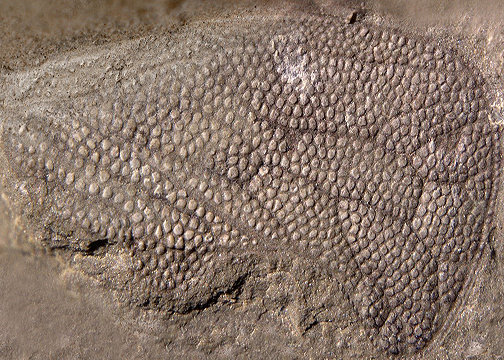Abstract
The extinct hemipteran superfamily Prosboloidea Handlirsch, 1906 comprises two ancient families (viz., Prosbolidae Handlirsch, 1906 and Maguviopseidae Shcherbakov, 2011) reported from the Permian (Artinskian) to the Jurassic (Callovian) (Szwedo, 2018). The Triassic family Maguviopseidae was established by Shcherbakov (2011) with relatively high generic diversity, including eleven genera within two subfamilies: Sacvoyageinae Shcherbakov, 2011; and Maguviopseinae Shcherbakov, 2011 comprising two tribes, occurring from the Middle to Upper Triassic Madygen Formation of Madygen, Kyrgyzstan. The known maguviopseids show diversified tegminal shapes with sculptured ornamentations on surface, and some genera with highly convex costal margin are considered as an adaptative to mimicry among their hostplants (probably seeds or buds) in order to avoid predators (Shcherbakov, 2011).
References
Bourgoin, T., Wang, R.R., Asche, M., Hoch, H., Soulier-Perkins, A., Stroinski, A., Yap, S. & Szwedo, J. (2015) From micropterism to hyperpterism: recognition strategy and standardized homology-driven terminology of the forewing venation patterns in planthoppers (Hemiptera: Fulgoromorpha). Zoomorphology, 134, 63–77. https://doi.org/10.1007/s00435-014-0243-6
Evans, J.W. (1946) A natural classification of leaf-hoppers (Homoptera, Jassoidea). Part 1. External morphology and systematic position. Transactions of the Royal Entomological Society of London, 96, 47–60. https://doi.org/10.1111/j.1365-2311.1946.tb00442.x
Fu, Y.Z., Azar, D. & Huang, D.Y. (2021) The first Dysmorphoptilidae from the Middle Triassic of China (Hemiptera: Cicadomorpha). Historical Biology, 33, 3506–3512. https://doi.org/10.1080/08912963.2021.1874374
Handlirsch, B.A. (1906–1908) Die fossilen Insekten und die Phylogenie der Rezenten Formen. Ein Handbuch für Paläontologen und Zoologen. Engelmann, Leipzig, 1430 pp. https://doi.org/10.5962/bhl.title.34145
Linnaeus, C. (1758) Systema naturae per regna tria naturae, secundum classes, ordines, genera, species, cum characteribus, differentiis, synonymis, locis. Tomus I. Editio decima, reformata. L. Salvii, Holmiae [= Stockholm], 824 pp. https://doi.org/10.5962/bhl.title.542
Nel, A., Prokop, J., Nel, P., Grandcolas, P., Huang, D.Y, Roques, P., Guilbert, E., Dostál, O. & Szwedo, J. (2012) Traits and evolution of wing venation pattern in paraneopteran insects. Journal of Morphology, 273, 480–506. https://doi.org/10.1002/jmor.11036
Shcherbakov, D.E. (2011) New and little-known families of Hemiptera Cicadomorpha from the Triassic of Central Asia—early analogs of treehoppers and planthoppers. Zootaxa, 2836 (1), 1–26. https://doi.org/10.11646/zootaxa.2836.1.1
Szwedo, J. (2018) The unity, diversity and conformity of bugs (Hemiptera) through time. Earth and Environmental Science Transactions of the Royal Society of Edinburgh, 107, 109–128. https://doi.org/10.1017/S175569101700038X


